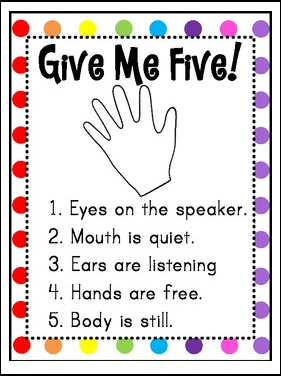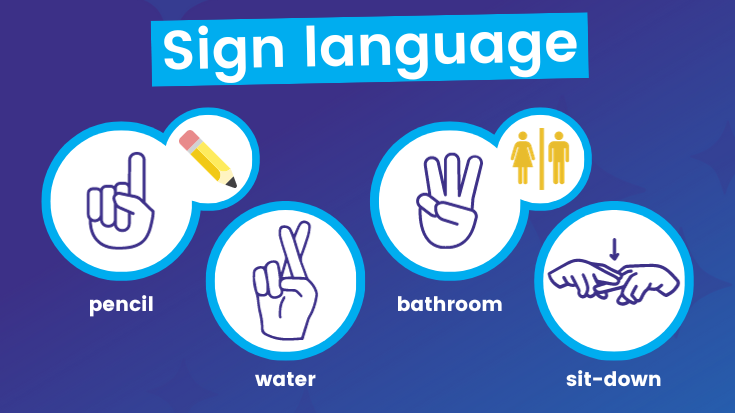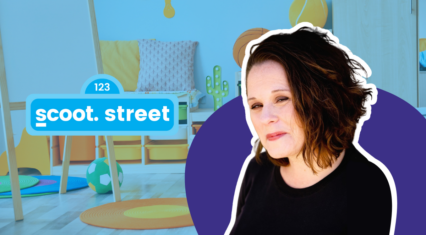Search
Get started
Log into your referral dashboard
Teachers have a secret superpower: they know how to hush a room, captivate students, and keep them excited.
Master these classroom management skills and you’re well on your way to a smoother teaching experience.
Explore our collection of verbal and non-verbal cues and attention-getters for your classroom.
Keep more than one in your back pocket to find the attention-getter that works best for you and your students. Happy teaching! 🚀
Table of contents:
Why use verbal and non-verbal cues for classroom management
How to implement attention-getters effectively
Why use verbal and non-verbal cues for classroom management
In a bustling classroom, effective communication is key. Quick, engaging cues bring wandering attention back, allowing you to give directions and set behavioral expectations. There are many benefits:
- Save time and energy: A well-executed clap call back or a simple point to the classroom rules can swiftly command attention without draining your energy.
- Foster teamwork and listening skills: Cues promote patience, active listening, and teamwork. Students learn to respond together, encouraging positive peer influence and exemplary behavior.
- Set the mood and make learning fun: Interesting attention-getters and songs can enrich your students’ learning. Catchy tunes and creative cues with instruments or using sign language teaches kids new cultures and ways to communicate.
Verbal cues
Verbal cues are a set of techniques that rely on using your voice or music to elicit cooperation from your students.
Keep in mind that verbal cues are more effective for elementary grade-level students who are still learning social cues, but older students might find them childish.
Here’s a variety of verbal cues below.
1. Call backs
View this post on Instagram
Call backs are a tried and true teacher favorite to grab students’ attention without yelling at the class to be quiet.
Teachers say something aloud, and students respond collectively. Try these engaging call backs:
- Class, class? / Yes, yes?
- 1-2-3, eyes on me! / 1-2, eyes on you.
- Hocus pocus… / Everybody focus!
- Macaroni and cheese! / Everybody freeze!
- Waterfall / Shhhh… (with finger on lips or waterfall arm motion)
Resource: 50 fun call-and-response ideas to get students’ attention
2. Classroom transition songs
Songs can be used to set the tone for various class routines and transitions.
Play upbeat pop music to welcome students or calming jazz during quiet work periods. Pause the music as a signal for instructions or a countdown timer for students to return to their seats. As the class ends, choose lively tunes for an energetic exit or mellow melodies to ease their excitement.
Create a playlist of songs you like! Prioritize family-friendly and activity-appropriate songs. Include your students’ favorites when suitable. It’s a great way to build rapport with students.
Don’t forget to bring a portable speaker!
Resource: 11 Classroom Songs for Transition
3. Line up chants
Photo credits: Teachers Pay Teachers
Chants can line up your students quickly, reducing delays and keeping them well-behaved to leave the classroom.
Beyond line-up chants, there are multiple strategies to keep lining-up quick and fun for students. Check ’em out below!
Resource: 26 Genius Lining-Up Strategies To Make Your Life Easier
4. Give me five
Photo credits: Teachers Pay Teachers
Raise your hand high and say “Give me five.”
Wait for your students to quiet down and raise their hands in response. Raise each finger slowly as you wait.
This technique cues students to check for 5 things: eyes on the speaker, ears listening, mouth quiet, hands free, and body still.
As you wait, you’re giving students the opportunity to work together to get back on track. Those who follow instruction will encourage their peers who are a bit slower to listen.
You can make it even more exciting by timing your students to see how long it takes for everyone to raise their hand. Then challenge them to beat their time.
Resource: FREE “Give Me Five” Poster
Non-verbal cues
Your voice is a powerful tool to use in the classroom, but non-verbal signals are perfect for grabbing attention without tiring yourself out. Non-verbal signals are also best used in public spaces where silence is needed.
Below you’ll find a collection of non-verbal cues that are useful for attention-getting, disciplining students, and responding to student needs in non-disruptive ways.
1. Clap-in or snap-in patterns
Patterns of shushing, clapping, or snapping can work just as effectively as call backs.
Try these clap-in or snap-in patterns where you clap a rhythm and the kids clap the same rhythm back.
Practice speeding up the rhythm or slowing it down to reinforce their reflexes!
2. The look
A simple, expectant gaze coupled with patience can work wonders.
Stand in front of the class and use an attention-getter. Then wait expectantly for your students to become aware of their behavior and quiet down.
The students closest to you will often quiet down first. Yep, a few chatterbugs may linger, making others squirm while waiting. That’s when their seatmates help you out by shushing them!
When “the look” works, 15-30 seconds is all it takes to silence an auditorium or a classroom.
Acknowledge their cooperation with a “thank you” before continuing.
3. Sign language
When you’re in the middle of a lesson, the last thing you want to do is stop teaching the whole class to tell a student they can grab a tissue.
Teach students simple signs such as bathroom, tissue, sit, stand, or “I have a question” to reduce interruptions!
Here are some examples of signs to use:
1. Bathroom break: Students can raise two crossed fingers to the teacher, wait for a thumbs-up, and be off to take care of their business.
2. Sit down: When little ones get antsy at circle time, simply show them this signal to remind them to quietly have a seat.
Resource: 8 Hand Signals for the Classroom
4. Instruments
Try using a musical instrument. Here are some ideas of instruments that kids will love:
- Claves
- Chime
- Bell
- Singing bowl
- Drum
- Rain stick
You can also create a box of musical instruments from the local Dollar Store or party shop. Each time you want the students’ attention, all you do is reach in the box for another instrument to play.
5. Proximity
Where you stand when you teach can make a big difference.
Walk over and pause near a student who is distracted, making eye contact if necessary. They’ll know to get back to business.
How to implement attention-getters effectively
1. Use a variety of cues that will work for your students.
Cues are not a one-size-fits-all. Different activities and lesson plans may call for a mix of auditory, visual, and other sensory cues.
Tailor cues to your students’ grade level, energy levels, lesson plan. And if they use any cues already, default to those cues.
2. Practice, practice, practice!
Whether or not you’re teaching a new cue or using a familiar one for your kids, practice! Practice before you begin class to set expectations early on in the day.
Before you begin the lesson plan, teach your students a call back. Then rehearse it with them a couple times.
3. Ask your students to teach you signals they already use.
As a substitute teacher, you’re picking up where the lead teacher left off. It’s good to fit into the students’ existing routines without imposing new ones.
Check your emergency sub plans to see if the lead teacher left you notes on which verbal and non-verbal cues to use for classroom management.
If not, ask your students, “What kind of call back does your teacher use to get attention?” or “What is their procedure to line up for lunch or recess?”
Chances are, they’ll be super excited to play teacher and teach you their daily procedures.
4. Be open to feedback from the students.
Be open to students’ suggestions for signals. This shows that you’re all responsible for building classroom norms.
Let your students know it’s okay to talk to you privately if a signal feels off. Gestures differ across cultures and some students might need tweaks due to motor skills.
Share with the class any modifications you’ve created based on their feedback. If a signal has a cultural twist, turn it into a teaching moment (no need to name names).
5. Use visual reminders to help students learn a new signal.
Try using posters and visual aids to reinforce expectations non-verbally. For example, you can put a picture up of “Give Me Five” to teach the 5 things they should remember to do.
Posters are great to give gentle reminders for expectations without needing to repeat yourself too much.
Teachers! What’s your favorite attention-getter?
Have you tried (or would you like to try) any of these strategies with your kids? What other verbal or non-verbal cues do you use?
Share your suggestions in the comments!
Want to sub with us?
With these tips, you’re sure to become a favorite sub! If you’re a current sub or someone looking to try out teaching, apply to Scoot Education.
We’re an educational staffing company dedicated to creating exceptional experiences in education.
As a Scoot sub, you’ll get ultimate flexibility in your work schedule, 1-on-1 support through a personal Education Consultant, and market leading pay.












![How to write a strong substitute note [+free template!]](https://scoot.education/wp-content/uploads/2022/05/thank-you-426x235.png)


